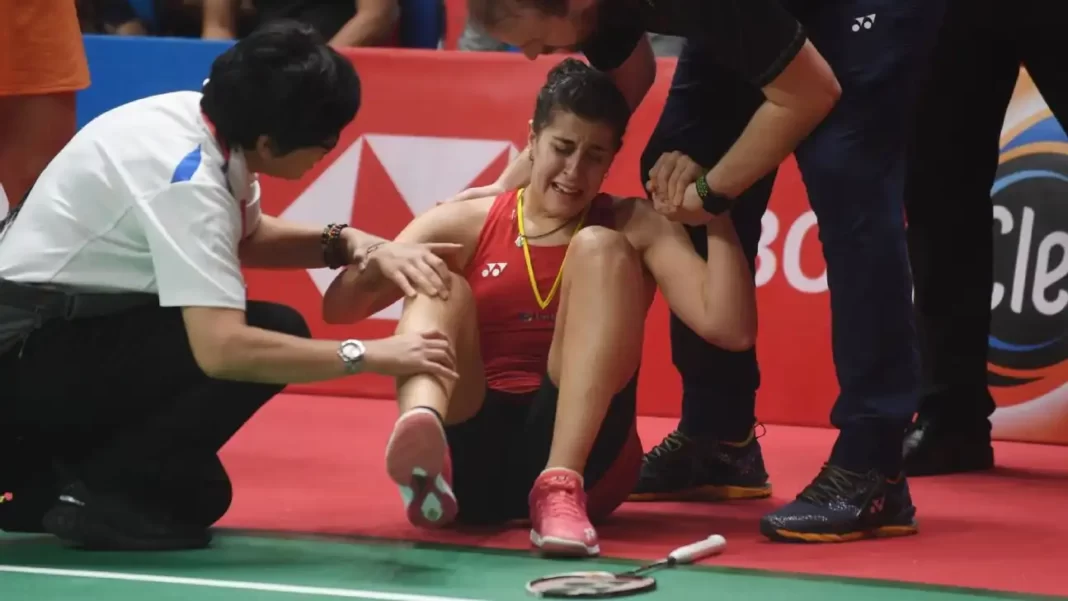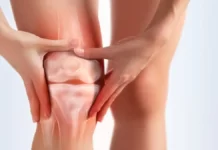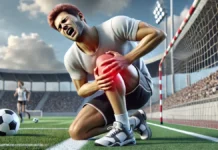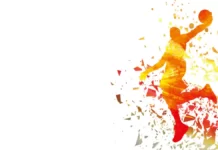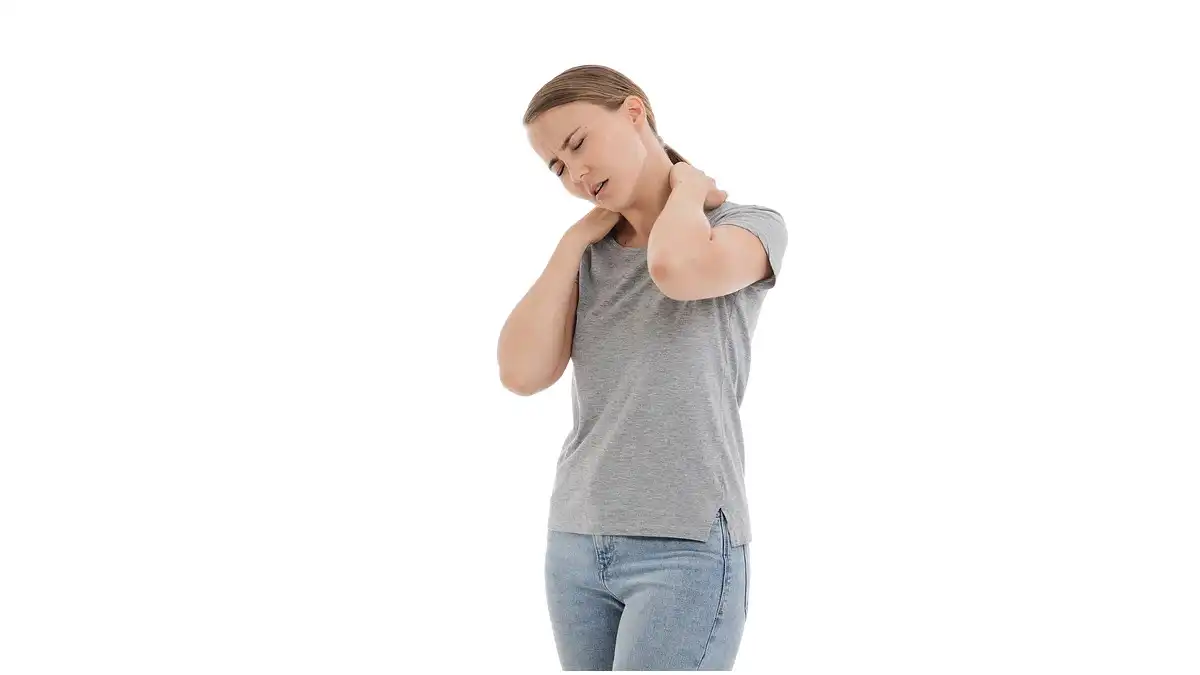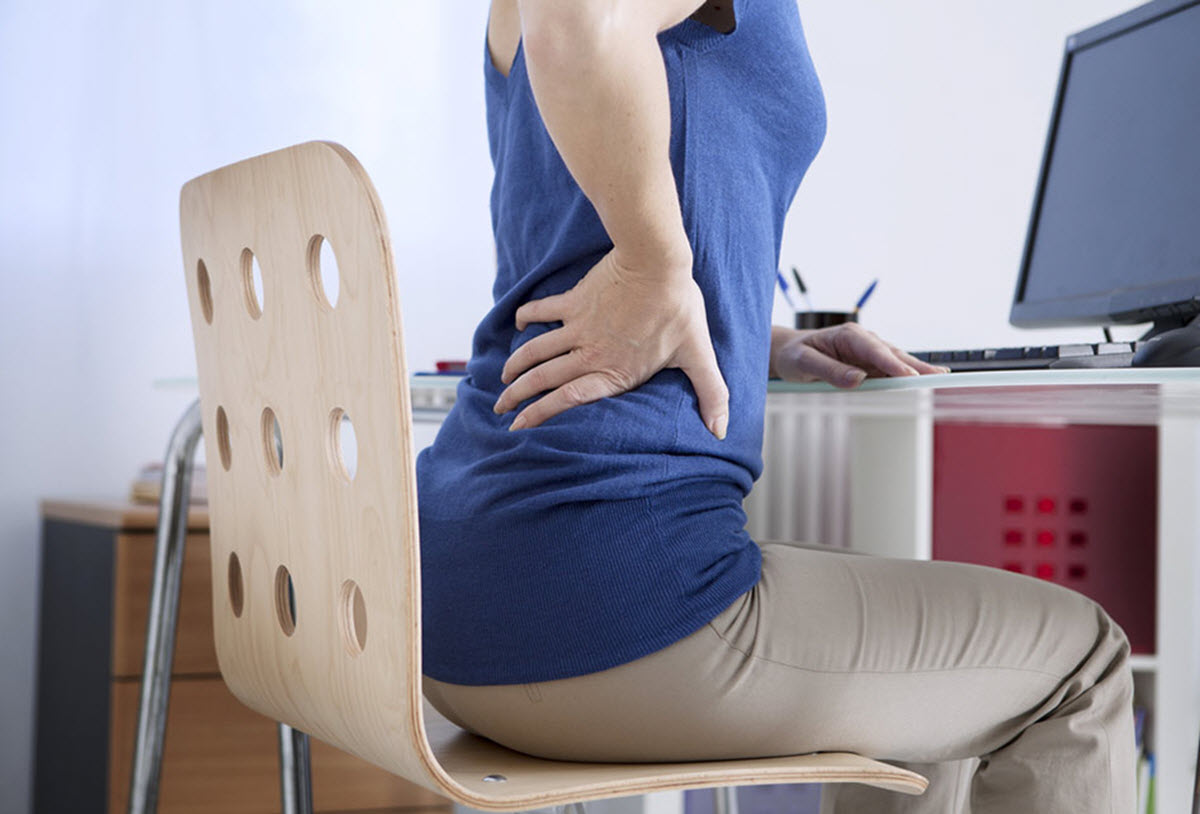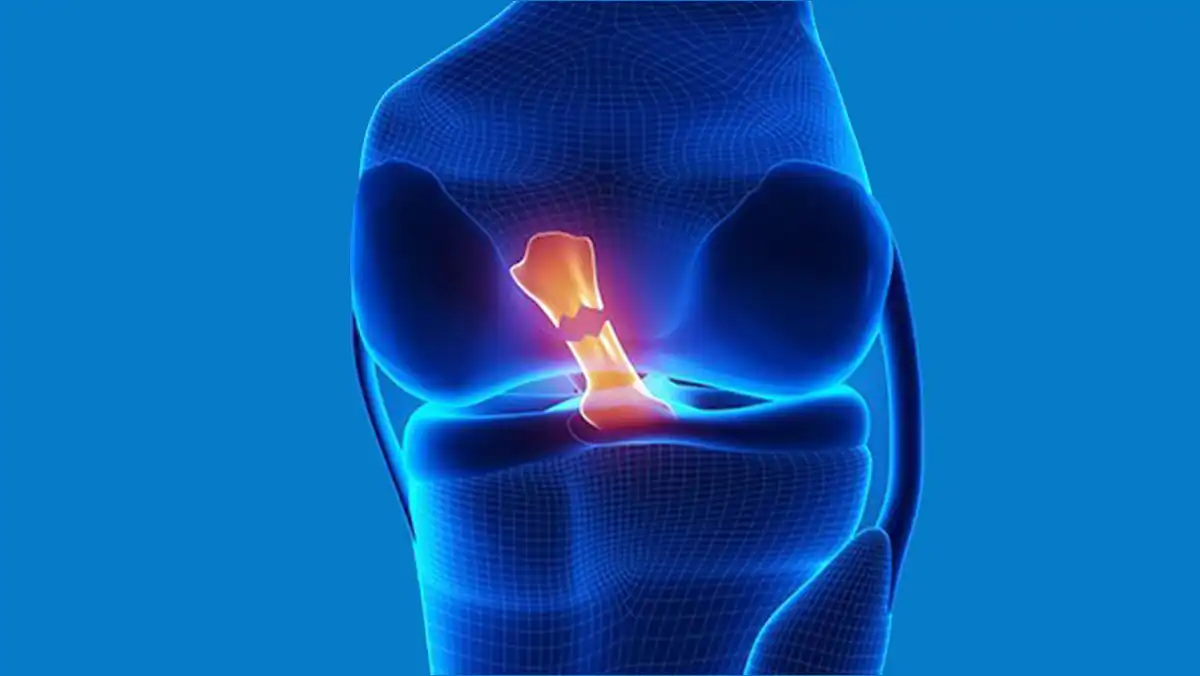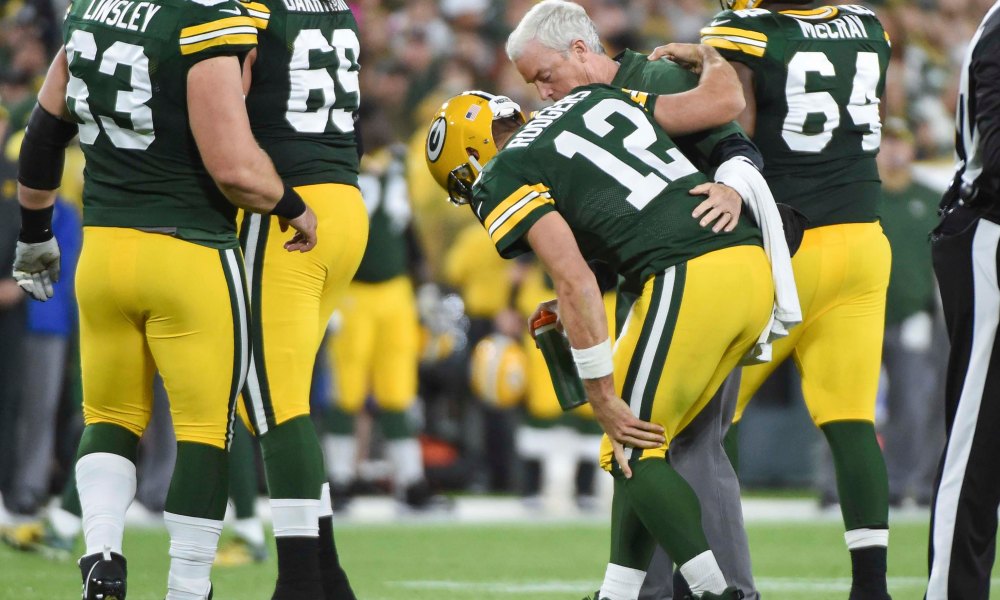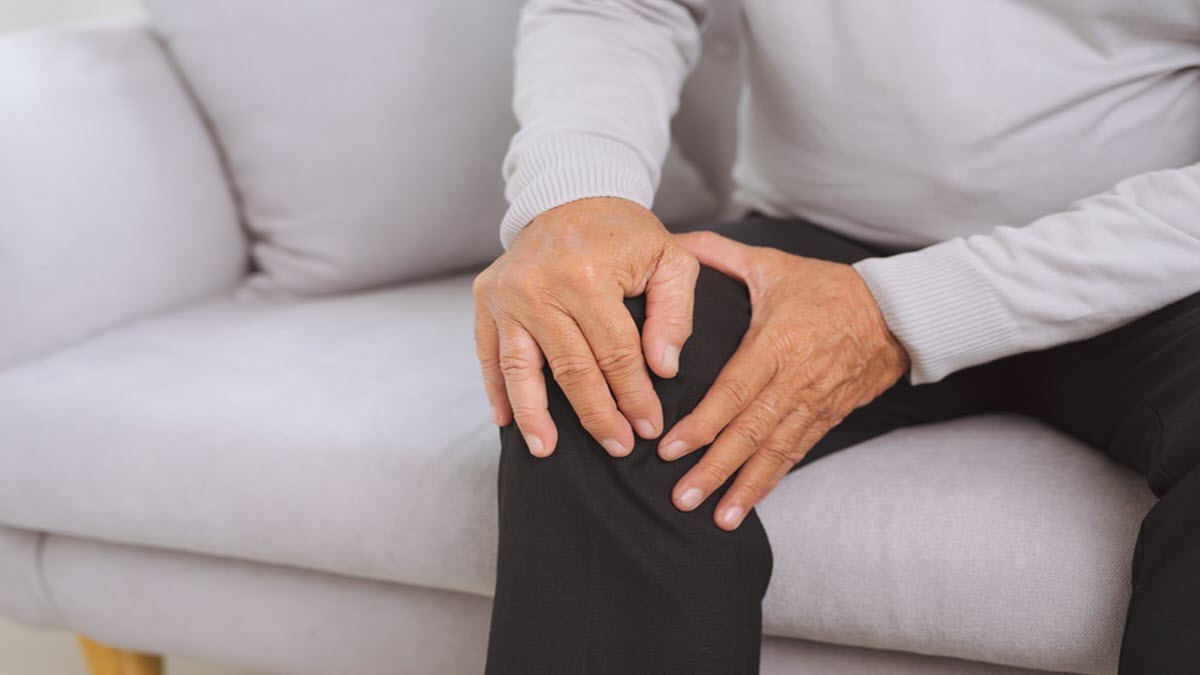A tear of the anterior cruciate ligament occurs following significant force applied to the knee, particularly during sudden movements or sporting activities requiring rapid changes of direction.
Introduction
Anterior cruciate ligament (ACL) tear is a common injury, especially among athletes participating in sports that involve sudden movements, pivots, twists, or rapid changes of direction, such as football, basketball, skiing, and soccer. The ACL, located in the knee joint, is one of the main ligaments responsible for the stability of this joint.
This injury occurs when the rotational (torsion) or hyperextension force applied to the knee joint exceeds the strength of the ligament. In most cases, ligament tears occur during sports requiring sudden stops or changes in direction, jumping, and landing. Although partial tears can occur, ACL injuries usually result in complete tears.
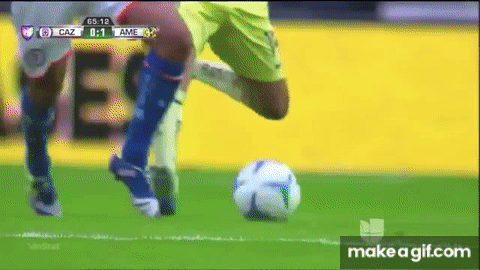
The anterior cruciate ligament is frequently damaged in the tibiofemoral joint. Several mechanisms can cause damage to this ligament. Any force resulting in anterior translation of the tibia relative to the femur, or posterior translation of the femur relative to the tibia, has the potential to tear or rupture the anterior cruciate. Hyperextension of the tibiofemoral joint can also cause a tear, because extension of this joint involves anterior sliding of the tibia and/or posterior sliding of the femur.
High rotational forces on the tibiofemoral joint, including medial rotation of the tibia or lateral rotation of the femur, are factors leading to ACL tear. These forces place considerable pressure on the ligament, exceeding its ability to maintain the stability of the knee joint.
When a person experiences an ACL tear, symptoms may include severe pain, swelling, joint instability, and loss of mobility. Diagnosis is generally made by clinical examinations and medical imaging, such as MRI. Treatment can vary depending on the severity of the injury, ranging from rehabilitation and physical therapy to ligament reconstruction surgery.
Preventing ACL injuries often involves specific training programs aimed at strengthening the muscles surrounding the knee, improving balance, and teaching safe movement techniques. Awareness of these mechanisms of injury can also help minimize risk, particularly in athletes exposed to high-risk activities for the anterior cruciate ligament.
Reference:
American Academy of Orthopedic Surgeons. (2014). Anterior Cruciate Ligament (ACL) Injuries. OrthoInfo. https://orthoinfo.aaos.org/en/diseases–conditions/anterior-cruciate-ligament-acl-injuries/

Mechanisms of anterior cruciate ligament rupture
The ACL is one of the primary stabilizers of the knee, and its rupture can occur during sudden movements, rapid changes in direction, or excessive force applied to the knee. One common mechanism is twisting of the knee when the foot is fixed to the ground and the body rotates, creating excess strain on the ACL. Hyperextension of the knee, often seen in falls, can also lead to ACL rupture.
Knee biomechanics play a key role in understanding these mechanisms. When excessive rotational force or stress is applied to the knee, the ACL can experience significant stress, exceeding its ability to maintain stability. Sports activities, especially those involving pivoting movements, pose an increased risk of ACL rupture. Contact sports, such as football, basketball, and skiing, are often associated with a greater number of ACL injuries due to the forces and movements involved.
Furthermore, anatomical and genetic factors may also contribute to the predisposition to ACL rupture. Some people may have an anatomical structure of the knee that makes them more vulnerable, such as a higher Q angle. Additionally, studies suggest that there is a genetic component to susceptibility to ACL injuries, highlighting the importance of considering various factors when assessing risk in individuals.
Symptoms of ACL tears can vary, but they often include a cracking or tearing sensation at the time of injury, rapid swelling of the knee, loss of stability, and difficulty bearing weight. Accurate diagnosis of ACL tear usually involves clinical examinations, imaging tests such as MRI and X-ray, and a thorough evaluation of the patient’s medical history.
- Sudden Deceleration: Rapid deceleration, such as that which occurs during a sudden stop or sudden change of direction, can place significant pressure on the ACL, potentially leading to its rupture.
- Powerful Quadriceps Contraction: During high-speed movements, a sudden, forceful contraction of the quadriceps muscle can create excessive forces on the knee, putting tension on the ACL and causing it to tear.
- Valgus Stress: Valgus stress occurs when the knee is subjected to inward pressure. This can occur during twisting movements associated with excessive lateral forces on the knee.
- Hyperextension: Hyperextension of the knee, where the joint extends beyond its normal position, can cause excessive strain on the ACL, contributing to its rupture.
- External Rotation: External rotation of the knee, particularly when landing from a jump or twisting the knee during athletic activity, can exert forces that exceed the strength of the ACL.
- Internal Rotation with Varus or Hyperextension: Severe internal rotation of the knee associated with varus (outward pressure of the knee) or hyperextension movements may also be a mechanism of ACL injury.


Symptoms
Patients with a torn anterior cruciate ligament often report sudden pain and looseness of the knee following a twisting or hyperextension injury. A third of patients report a “pop” sound when the ligament tears. A patient who sustains an ACL tear during athletic activity is usually unable to continue participation due to pain and/or instability.
Symptoms of a torn anterior cruciate ligament (ACL) can vary depending on the severity of the injury, but they generally include the following:
- Acute Pain: Pain is often felt at the time of injury and can be acute. It usually occurs in the knee area and can radiate to other parts of the leg.
- Swelling: Significant swelling of the knee is common after an ACL tear. This is due to inflammation resulting from the injury.
- Hematoma: A hematoma (collection of blood) may form in the affected area, contributing to swelling.
- Joint Instability: People with an ACL tear may experience a feeling of instability or “giving” in the knee. This can make it difficult to walk, go up and down stairs, or participate in sports activities.
- “Giving” Sensation: Some patients describe a “giving” feeling or weakness in the knee, particularly when attempting to turn or pivot.
- Audible Sounds: Some patients may hear a “pop” or crackle at the time of injury, although this is not common.
- Difficulty Bending the Knee: Difficulty fully bending the knee may occur due to pain and instability.
- Loss of Mobility: Knee mobility may be reduced due to pain and swelling, which can lead to lameness.
Differential diagnoses
- Medial Lateral Ligament (ILL) Sprain: Symptoms of an MLI sprain can be similar to those of an ACL tear, including pain, swelling, and instability of the knee. A thorough physical examination and medical images can help distinguish the two injuries.
- Medial Collateral Ligament (MCL) Sprain: A MCL sprain can also cause knee instability and symptoms similar to an ACL tear. Clinical examinations and imaging tests are necessary to differentiate these injuries.
- Meniscal Injury: Meniscal injuries, which involve the cartilage in the knee joint, can cause pain, swelling and a feeling of instability. An MRI can help identify these lesions.
- Fractured Patella or Femur: Fractures at the patella or femur may have symptoms similar to those of an ACL tear, including pain and swelling. Radiographs are usually necessary to rule out these differential diagnoses.
- Patellar Tendon Injuries: An injury to the patellar tendon can cause similar symptoms, such as pain and swelling in the knee. A thorough clinical evaluation and imaging studies can help establish the diagnosis.
- Knee Arthritis: Arthritis can cause symptoms such as pain, swelling and joint stiffness, which can be confused with an ACL tear. Imaging tests, such as X-rays or an MRI, can help differentiate these conditions.
- Patellar Dislocation or Subluxation: A dislocation or subluxation of the patella can lead to similar symptoms, including knee instability. Medical images may be needed to assess the position of the kneecap.
Prevention of anterior cruciate ligament (ACL) injuries
Preventing anterior cruciate ligament (ACL) injuries is crucial, especially in sports that involve sudden movements, frequent changes of direction, and jumping. Here are some general tips and specific training techniques to strengthen the structures around the knee and reduce the risk of ACL injuries:
General tips:
- Proper warm-up: Before any physical activity, be sure to do a proper warm-up to increase body temperature, improve blood circulation, and prepare muscles and ligaments for the upcoming activity.
- Overall Muscle Strengthening: An overall muscle strengthening program, with emphasis on the muscles around the knee (quadriceps, hamstrings, gluteal muscles), can help stabilize the knee and reduce pressure on the ACL.
- Proper Technique: Practice proper movement technique, especially when jumping, landing, and changing direction. Work on coordination and balance to reduce stress on the knee.
- Improving proprioception: Exercises to improve proprioception (the perception of body position and movement) can help strengthen knee stability and prevent unwanted movements.
- Appropriate shoes: Wear shoes appropriate for your sporting activity, providing good support and adequate grip.
Specific training techniques:
- Eccentric strengthening: Incorporate eccentric exercises into your training program, such as eccentric squats, to strengthen muscles specifically for ACL injury prevention.
- Specific work on the hamstrings: The hamstrings play a crucial role in knee stability. Incorporate exercises such as hamstring curls to strengthen this area.
- Controlled plyometric exercises: Plyometric exercises, such as jumping jacks, can be included in your training program, but be sure to perform them in a controlled manner to avoid excessive overload on the ACL.
- Strengthening the gluteal muscles: The gluteal muscles contribute to knee stability. Incorporate targeted exercises like hip raises to strengthen these muscles.
- Stretches and flexibility: Maintain good muscle flexibility, especially around the hips, thighs and calves. Flexible muscles can reduce strain on the knee.
Before starting any new training program, it is recommended to consult a healthcare professional or osteopath for personalized advice based on your current physical condition and specific needs.
Guidelines for returning to sports activities after anterior cruciate ligament rupture.
General guidelines
- Medical consultation: Before resuming any physical activity, consult your doctor or an orthopedic specialist to assess your state of health, discuss your rehabilitation and obtain the green light to resume activities.
- Comprehensive rehabilitation: Follow a comprehensive rehabilitation program under the supervision of an osteopath. Rehabilitation should include muscle strengthening exercises, proprioception, and stretching to restore knee stability.
- Muscle strengthening: Pay special attention to strengthening the muscles around the knee, including the quadriceps, hamstrings, gluteal muscles, and calf muscles. A muscle imbalance can increase the risk of injury.
- Improving proprioception: Incorporate exercises aimed at improving proprioception to strengthen knee stability and reduce the risk of unwanted movements.
- Specific work on the hamstrings: Specifically strengthen the hamstrings to protect the knee and prevent overload on the ACL.
Precautionary measures
- Gradual progression: Return to activities gradually, starting with low-impact exercises and gradually increasing the intensity. Avoid high-impact activities at first.
- Technique Assessment: Work with a fitness coach or physical therapist to evaluate and improve your movement technique, especially when jumping, changing direction, and landing.
- Wearing a knee brace or support: Consider wearing a knee brace or support while returning to activities, especially in the early stages, to provide additional support to the knee.
- Thorough warm-up: Pay special attention to warming up before physical activity, focusing on the muscles of the lower body and working on flexibility.
- Watch for signs of fatigue or pain: Be alert for signs of fatigue or pain. If you experience discomfort or pain, reduce exercise intensity and consult a healthcare professional if necessary.
Adjustments to consider
- Choice of activities: Initially opt for low-impact activities, such as swimming, cycling or walking, before progressing to more demanding activities.
- Avoid sudden movements: Avoid sudden movements and rapid changes in direction that could put excessive pressure on the knee.
- Continuous Strengthening: Incorporate strengthening exercises into your regular workout routine to maintain muscle strength and knee stability long-term.
- Regular medical monitoring: Schedule regular medical checkups to assess the progress of your rehabilitation and adjust your training program accordingly.
It is crucial to follow these guidelines in conjunction with healthcare professionals, such as physical therapists and sports injury doctors, to ensure a safe and effective return to physical activities after an anterior cruciate ligament rupture.
Risk factors for rupture of the anterior cruciate ligament
Anterior cruciate ligament (ACL) rupture is influenced by a complex combination of risk factors, a crucial topic for healthcare professionals, including osteopaths. Anatomical characteristics play a determining role, with individuals with a higher Q angle being more likely to sustain this injury. Additionally, individual biomechanics, such as the shape of the knee joint surfaces, may contribute to ACL vulnerability. A thorough study of each person’s specific body mechanics is essential to assess risk.
Genetic factors are also key elements. Research suggests a genetic component in predisposition to ACL injuries, highlighting the importance of assessing family history when analyzing risk. Variations in the structure of collagen, which makes up an important part of ligaments, may also play a role in susceptibility to ACL tears.
Physical activity, particularly in the sporting context, is a major risk factor. Sports involving pivoting movements, rapid changes of direction, and physical contact, such as football, basketball, and skiing, significantly increase the risk of ACL rupture. Poor sports technique, inadequate training levels, and warm-up errors can also contribute to this injury.
Gender differences are also relevant, with studies showing that women have a higher risk of ACL rupture compared to men. Anatomical, hormonal, and muscular factors can all contribute to this gender disparity. Hormonal fluctuations during the menstrual cycle can affect ligament stability, potentially increasing the risk in women.
Aside from these factors, a history of knee injuries, including ACL sprains, increases vulnerability. Previous traumatic mechanisms can weaken the structure of the ACL, making it more susceptible to rupture in subsequent events. Prevention of recurrence in individuals with a history of ACL sprains therefore becomes crucial.
- Sports activities: Sports such as football, basketball, soccer, skiing, tennis and other sports that involve sudden movements can increase the risk of ACL injury.
- Gender: Women have a higher risk of ACL rupture compared to men. It is thought that this may be due to anatomical, hormonal and neuromuscular differences.
- Anatomy: Certain anatomical features, such as the shape of the tibial plateau, may increase susceptibility to ACL rupture.
- Age: Younger people, especially teenagers, may be more likely to experience an ACL tear. However, this injury can occur at any age.
- Muscle strength and balance: Muscle imbalance, particularly weakness in the stabilizing muscles of the knee, can increase the risk of ACL injury.
- Landing Technique: Improper landing technique after a jump can increase stress on the knee, increasing the risk of an ACL tear.
- Genetic predisposition: There is evidence to suggest that there may be a genetic predisposition to ACL rupture.
- Inadequate warm-up: Insufficient warm-up before strenuous physical activity can increase the risk of injuries, including ACL tears.
- Type of playing field: Uneven or slippery playing surfaces can increase the risk of knee injuries, including ACL tears.
- History of injuries: People with a previous knee injury, particularly an ACL injury, may have an increased risk of subsequent rupture.
Psychological Aspects
Anterior cruciate ligament (ACL) rupture often transcends physical aspects to significantly influence psychological well-being, particularly in athletes whose emotional engagement in their athletic performance is significant. The first psychological reaction to such an injury may be shock, often accompanied by fear of uncertainty about the sporting future. An athlete’s identity is often closely tied to their ability to perform, and a torn ACL can challenge that identity, leading to feelings of loss and anguish.
A major psychological element is frustration due to the sudden limitation of physical activities. Athletes are often accustomed to freedom of movement and physical expression, and the restriction imposed by injury can lead to feelings of frustration, irritability, and even depression. Loss of sporting skills can also have an impact on self-esteem, affecting self-confidence and the perception of one’s own value.
The rehabilitation process can also be emotionally taxing. Physical ups and downs can affect morale, and patience becomes essential. Athletes may feel impatient and helpless with the slow healing process, requiring psychological support to maintain motivation and perseverance.
Healthcare professionals, including osteopaths, have a crucial role in managing the psychological impact of an ACL tear. Establishing open communication about the emotional aspects of the injury, providing information about the healing process, and implementing coping strategies can help alleviate negative psychological effects. Encouraging athletes to maintain an active engagement in their rehabilitation, adjusting their goals realistically, can also help strengthen their sense of control.
Psychological strategies, such as positive visualization, meditation, and focusing on the controllable aspects of recovery, can be helpful in alleviating emotional stress. Seeking social support, whether from healthcare professionals, teammates or loved ones, can play a crucial role in managing psychological burden.
Common Psychological Aspects
- Frustration and disappointment: The injury can lead to feelings of frustration and disappointment, especially if it interrupts a sports season or personal goals.
- Fear of uncertainty: Uncertainty about recovery and the possibility of returning to previous performance levels can generate anxiety.
- Social Isolation: Athletes may feel a sense of isolation, especially if they are away from their teammates and their usual sporting environment during the recovery period.
- Loss of sporting identity: Some athletes may experience a loss of identity related to their status as a competitive athlete during the recovery period.
- Depression: The injury may contribute to the development of depressive symptoms, particularly if physical activity is an essential component of emotional well-being.
Tips for Coping with Emotional Stress
- Acceptance of the situation: Accept that injury is part of the sporting process and provides an opportunity for personal growth and development.
- Injury Education: Understanding the nature of the injury, the recovery process, and next steps can help reduce anxiety related to uncertainty.
- Professional support: Seeing a sports psychologist can offer emotional support and strategies for coping with psychological challenges related to the injury.
- Reassessment of goals: Adapting sports goals according to the reality of the injury can help maintain a feeling of motivation and progress.
- Restore a sense of control: Identifying aspects of recovery over which the athlete has control and focusing on them can improve emotional well-being.
- Open communication: Talking about your emotions with friends, family, or teammates can help break social isolation and gain support.
- Diversification of activities: Exploring other interests and activities outside of sport can help maintain emotional balance and alleviate loss of athletic identity.
- Mental training: Incorporating relaxation techniques, positive visualization, and affirmations can help maintain a positive mindset during recovery.
- Reconnecting with the team: Actively participating in the team even during the recovery period, for example, by attending training sessions, can help maintain a sense of belonging.
- Celebrate small victories: Recognizing and celebrating even small progress in the recovery process can build motivation and self-esteem.
It is important to emphasize that managing emotional stress varies from person to person. If feelings of distress persist, it is recommended to consult a mental health professional for additional support.
Contributing Factors
Anatomical Factors
- Knee Anatomy: Some individuals have knee anatomy that can increase ACL vulnerability, such as a particular shape of the tibial plateau or a particular inclination of the joint surfaces.
- Q angle: The Q angle, which measures the angle formed by the center line of the patella and the line connecting the anterior superior iliac spine to the center of the patella, can influence knee stability. A higher Q angle can increase the risk of ACL injuries.
Genetic Factors
- Heredity: Studies suggest that there may be a genetic component to predisposition to ACL injuries. Some individuals may inherit anatomical characteristics or tendencies to have weaker ligaments.
Environmental factors
- Type of physical activity: Sports that involve rapid changes of direction, jumping and landing can increase the risk of ACL injury. The risk is higher in sports such as soccer, basketball and skiing.
- Playing surface: Playing conditions, such as uneven or slippery terrain, can increase the risk of ACL injury.
- Training level: Inadequate training, muscle fatigue or muscle imbalance can increase the risk of ACL injuries.
Hormonal Factors
- Female Hormones: Female hormones, particularly estrogen, may influence ligament laxity and be linked to a higher risk of ACL rupture, partly explaining why women are more likely to experience this injury.
Individual Factors
- Injury History: People with a history of knee injuries, particularly ACL injuries, may have an increased risk of further ruptures.
- Movement Technique: Poor movement technique, especially when jumping, landing and changing direction, can increase stress on the ACL.
- Age and Sex: Adolescents and young adults, especially women, are at increased risk of ACL rupture. However, this injury can also occur at any age and in men.
- Muscle strength: Muscle imbalance or weakness, particularly in the quadriceps and hamstrings, can increase the risk of ACL injury.
Understanding these factors can contribute to the identification of individual risk elements. However, it is essential to recognize that most ACL tears result from the complex interaction of several of these factors. Prevention and management of these injuries often requires a holistic approach, including specific training programs, correction of movement technique and individual risk assessment.
Diagnostic test
Drawer test
The patient lies supine with knees bent 90 degrees and feet flat on the examination table. The examiner sits on the toes of the limb being tested to help stabilize it. The examiner grasps the proximal portion of the lower leg, just below the tibial plateau or tibiofemoral joint line, and attempts to translate the lower leg forward. The test is considered positive if there is no end-of-stroke sensation or excessive anterior translation compared to the contralateral side. In theory, the anterior translation should be less than 6 mm. If it is greater than 6 mm, the test is considered positive.

Lachman test
The Lachman test is a clinical test used to evaluate the integrity of the anterior cruciate ligament (ACL) in the knee. This is an instability test that can be performed by a healthcare professional, such as a doctor or physical therapist. Here is how the Lachman test is generally performed:
- Patient Positioning: The patient lies supine on an examination table, with the knee to be tested slightly bent (usually at approximately 20 to 30 degrees of flexion).
- Positioning of the Tester: The healthcare professional positions himself on the side of the knee to be tested. One hand is placed just above the kneecap to stabilize the femur, while the other hand grasps the lower leg (tibia).
- Movement of the Tibia: By keeping the femur stable, the tester exerts forward traction (anterior drawer) on the tibia, thus assessing the laxity or instability of the ACL.
- Translation Assessment: During the test, the healthcare professional assesses the amount of anterior translation of the tibia relative to the femur. Excessive translation may indicate possible rupture or laxity of the anterior cruciate ligament.
- Comparison with Unaffected Side: The tester may also perform the test on the unaffected knee for comparison purposes. Comparing both sides helps assess any significant differences in stability between the two knees.
The Lachman test is often considered more reliable than some other knee instability tests, and it is frequently used in the evaluation of anterior cruciate ligament injuries. However, it is important to note that this test is usually performed as part of an overall knee evaluation, which may also include imaging tests such as MRI to confirm the diagnosis.

Osteopathic approach
Strain Counterstrain

Sensitive point: in the tendons of the hamstring muscles at the widest part of the popliteal space (medially and laterally).
Position:

- Patient in supine position
- Place yourself on the side of the sensitive point
- Place a rolled up towel under the distal femur.
- Slowly push the shin back to shorten the ACL.
- Force of up to 20 kg may sometimes be required.
Conclusion
Anterior cruciate ligament (ACL) rupture is a common traumatic injury that can have significant implications on knee stability and function. This condition often requires medical intervention, whether conservative or surgical, depending on the severity of the rupture and the patient’s recovery goals.
In conclusion, anterior cruciate ligament rupture can cause significant challenges for those who suffer from it. The treatment decision, whether conservative or surgical, depends on several factors, including the patient’s activity level, knee stability, and recovery goals. Rehabilitation and osteopathy play a crucial role in the healing process, aiming to restore muscle strength, mobility and joint stability.
It is essential to emphasize the importance of an individualized approach in the management of ACL rupture. Each patient presents unique needs, and taking these specifics into account is essential to optimize results. Collaboration between the patient, healthcare professionals and therapists contributes to a comprehensive treatment plan that aims to restore normal knee function and enable a safe and effective return to daily activities or sports.
Ultimately, although anterior cruciate ligament rupture can present a major challenge, advances in the medical and rehabilitation fields offer promising prospects for recovery. A holistic approach, focused on understanding the patient’s individual needs, can play a crucial role in the healing process, promoting full recovery and improved quality of life.
References
- Giuliani JR, Kilcoyne KG, JP Street. Anterior cruciate ligament anatomy: a review of the anteromedial and posterolateral bundles. J Knee Surg. 2009 Apr;22(2):148-54. [ PubMed ]2.
- Gupta R, Malhotra A, Sood M, Masih GD. Is anterior cruciate ligament graft rupture (after successful anterior cruciate ligament reconstruction and return to sports) actually a graft failure or a re-injury? J Orthop Surg (Hong Kong). 2019 Jan-Apr;27(1):2309499019829625. [ PubMed ]3.
- Hoogeslag RAG, Brouwer RW, Boer BC, de Vries AJ, Huis In ‘t Veld R. Acute Anterior Cruciate Ligament Rupture: Repair or Reconstruction? Two-Year Results of a Randomized Controlled Clinical Trial. Am J Sports Med. 2019 Mar;47(3):567-577. [ PubMed ]4.
- Barfod KW, Rasmussen R, Blaabjerg B, Hölmich P, Lind M. [Return to play after anterior cruciate ligament reconstruction]. Ugeskr Laeger. 2019 Feb 18;181(8) [ PubMed ]5.
- Siegel L, Vandenakker-Albanese C, Siegel D. Anterior cruciate ligament injuries: anatomy, physiology, biomechanics, and management. Clin J Sport Med. 2012 Jul;22(4):349-55. [ PubMed ]6.
- Yu B, Garrett WE. Mechanisms of non-contact ACL injuries. Br J Sports Med. 2007 Aug;41 Suppl 1(Suppl 1):i47-51. [ PMC free article ] [ PubMed ]7.
- Shimokochi Y, Shultz SJ. Mechanisms of noncontact anterior cruciate ligament injury. J Athl Train. 2008 Jul-Aug;43(4):396-408. [ PMC free article ] [ PubMed ]8.
- Boden BP, Dean GS, Feagin JA, Garrett WE. Mechanisms of anterior cruciate ligament injury. Orthopedics. 2000 Jun;23(6):573-8. [ PubMed ]9.
- Pike AN, Patzkowski JC, Bottoni CR. Meniscal and Chondral Pathology Associated With Anterior Cruciate Ligament Injuries. J Am Acad Orthop Surg. 2019 Feb 01;27(3):75-84. [ PubMed ]10.
- Bollier M, Smith PA. Anterior cruciate ligament and medial collateral ligament injuries. J Knee Surg. 2014 Oct;27(5):359-68. [ PubMed ]11.
- Fanelli GC, Beck JD, Edson CJ. Combined PCL-ACL lateral and medial side injuries: treatment and results. Sports Med Arthrosc Rev. 2011 Jun;19(2):120-30. [ PubMed ]12.
- Dean RS, LaPrade RF. ACL and Posterolateral Corner Injuries. Curr Rev Musculoskelet Med. 2020 Feb;13(1):123-132. [ PMC free article ] [ PubMed ]13.
- Kaeding CC, Léger-St-Jean B, Magnussen RA. Epidemiology and Diagnosis of Anterior Cruciate Ligament Injuries. Clin Sports Med. 2017 Jan;36(1):1-8. [ PubMed ]14.
- Sutton KM, Bullock JM. Anterior cruciate ligament rupture: differences between males and females. J Am Acad Orthop Surg. 2013 Jan;21(1):41-50. [ PubMed ]15.
- Davey A, Endres NK, Johnson RJ, Shealy JE. Alpine Skiing Injuries. Sports Health. 2019 Jan/Feb;11(1):18-26. [ PMC free article ] [ PubMed ]16.
- Vaudreuil NJ, Rothrauff BB, de Sa D, Musahl V. The Pivot Shift: Current Experimental Methodology and Clinical Utility for Anterior Cruciate Ligament Rupture and Associated Injury. Curr Rev Musculoskelet Med. 2019 Mar;12(1):41-49. [ PMC free article ] [ PubMed ]17.
- Eberl R. [Anterior cruciate ligament rupture in children with open growth plate: Diagnostics and treatment]. Unfallchirurg. 2019 Jan;122(1):17-21. [ PubMed ]18.
- Palazzolo A, Rosso F, Bonasia DE, Saccia F, Rossi R., Knee Committee SIGASCOT. Uncommon Complications after Anterior Cruciate Ligament Reconstruction. Seals. 2018 Sep;6(3):188-203. [ PMC free article ] [ PubMed ]19.
- Coffey R, Bordoni B. StatPearls [Internet]. Stat Pearls Publishing; Treasure Island (FL): Jul 24, 2023. Lachman Test. [ PubMed ]20.
- Sokal PA, Norris R, Maddox TW, Oldershaw RA. The diagnostic accuracy of clinical tests for anterior cruciate ligament tears are comparable but the Lachman test has been previously overestimated: a systematic review and meta-analysis. Knee Surg Sports Traumatol Arthrosc. 2022 Oct;30(10):3287-3303. [ PMC free article ] [ PubMed ]21.
- Kim SJ, Kim HK. Reliability of the anterior drawer test, the pivot shift test, and the Lachman test. Clin Orthop Relat Res. 1995 Aug;(317):237-42. [ PubMed ]22.
- Huang W, Zhang Y, Yao Z, Ma L. Clinical examination of anterior cruciate ligament rupture: a systematic review and meta-analysis. Acta Orthop Traumatol Turkish. 2016;50(1):22-31. [ PubMed ]23.
- Lelli A, Di Turi RP, Spencer DB, Dòmini M. The “Lever Sign”: a new clinical test for the diagnosis of anterior cruciate ligament rupture. Knee Surg Sports Traumatol Arthrosc. 2016 Sep;24(9):2794-2797. [ PubMed ]

